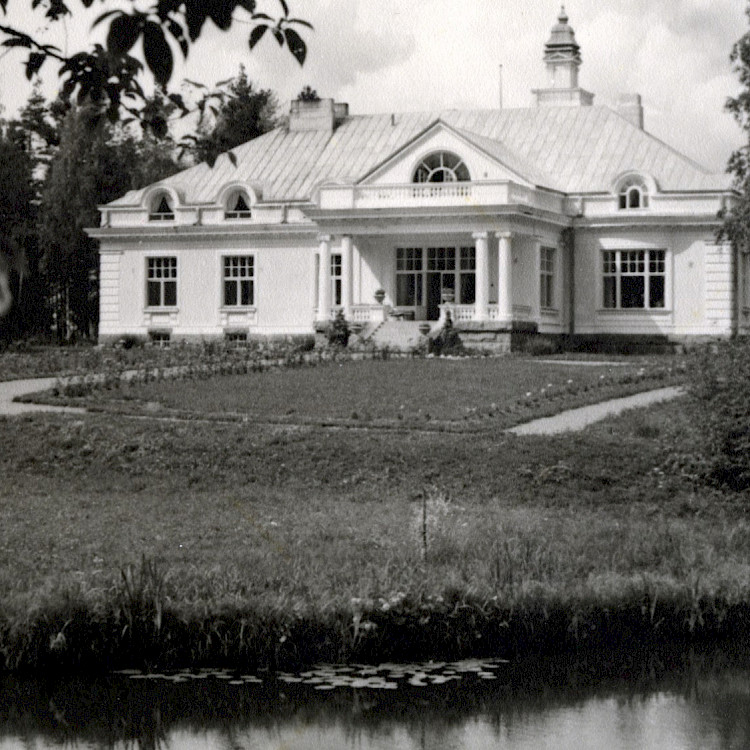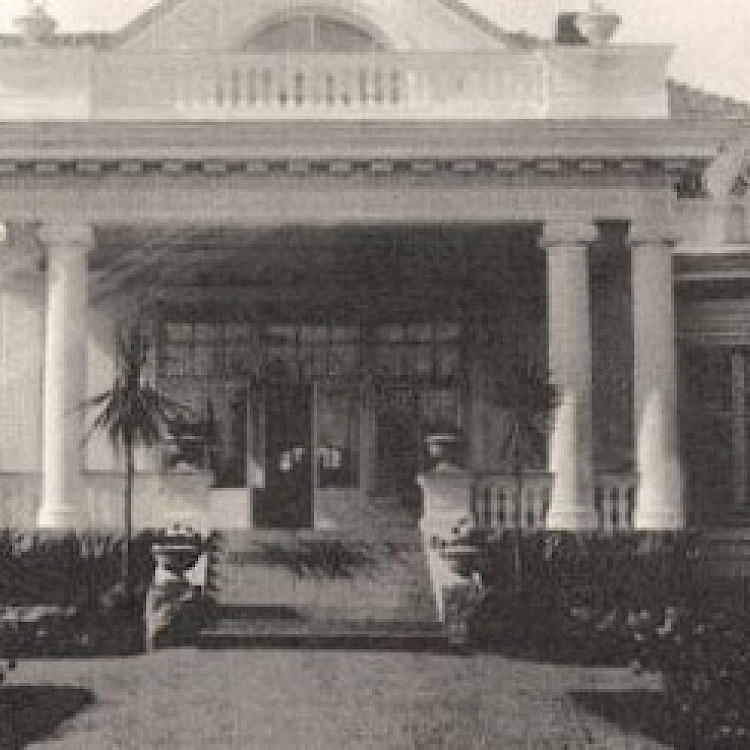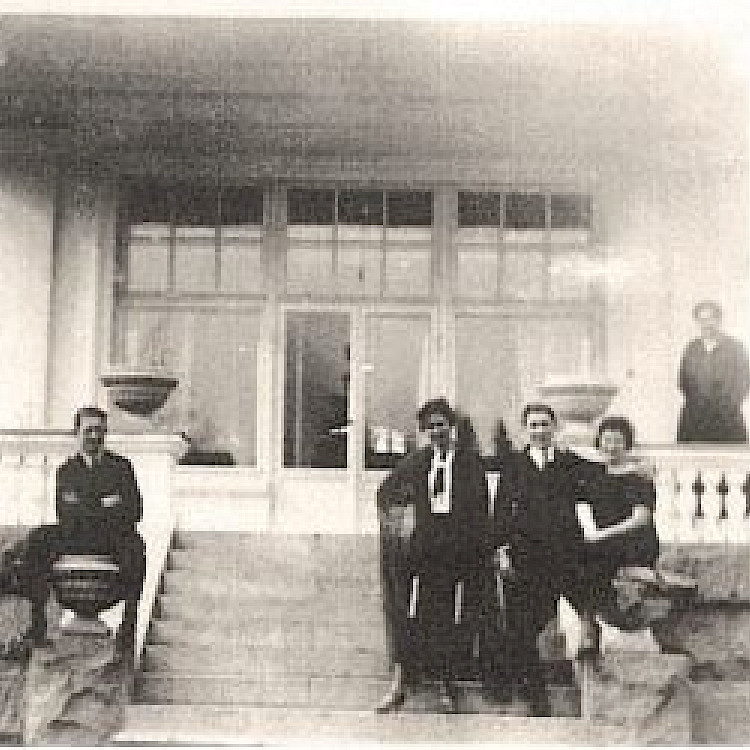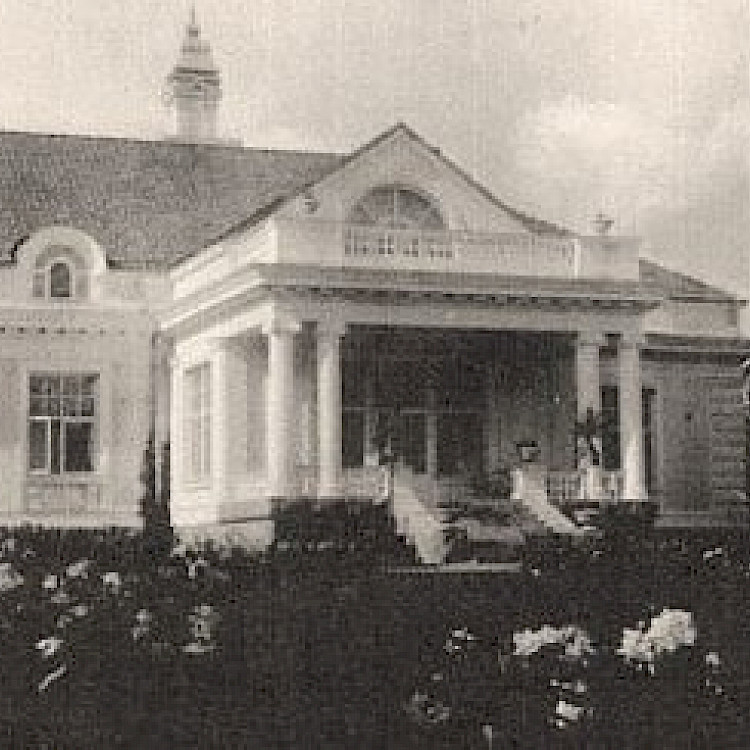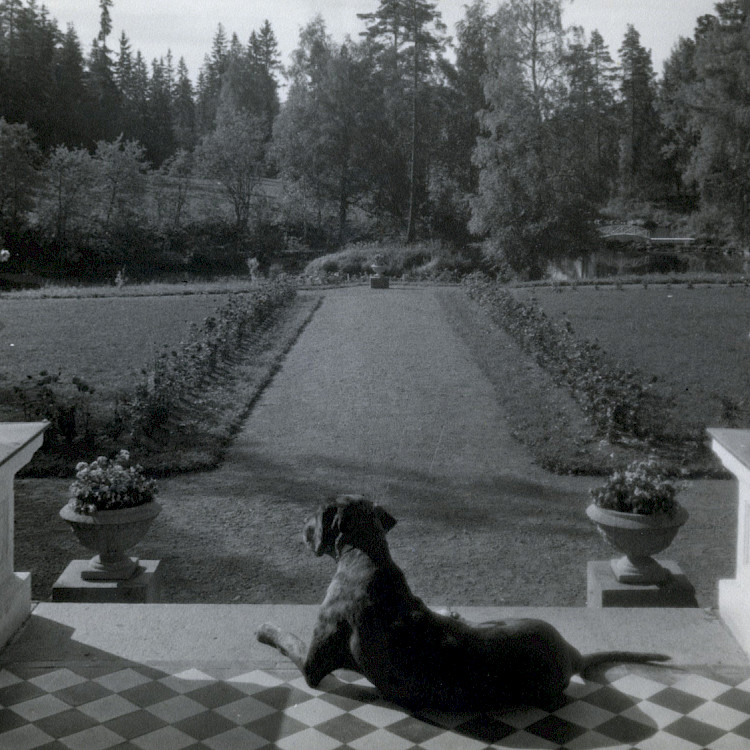The History of Hirvihaaran Kartano
The Manor of Hirvihaara was a part of the former Lassila estate, which in 1759 was divided in two and later into four parts. One of the divisions was named Hirvihaara.
Originally, the Manor of Hirvihaara was built as a private home. The builder was engineer Herman Holmberg (1874-1926), the owner of the Hirvihaara matchstick factory. The family of Herman Holmberg moved from Helsinki to Hirvihaara in 1878, the father of the family, Frans Holmberg, having bought the Hirvihaara matchstick factory. Frans Holmberg died in 1901, and the factory was transferred to his son Herman Holmberg, who had graduated as an engineer in Sweden. He repaired and modernised the factory by acquiring machines from Sweden.
Creation of distinguished designers
As the owner of the matchstick factory, Herman Holmberg was among the wealthiest people in Finland. He constructed a building in Hirvihaara to serve as his home, and due to its grandeur and manor-like appearance people started referring to it as a manor. Architect Jarl Eklund was employed as its designer. Among the employees in his architectural firm in Helsinki was Eero Saarinen, with whom he participated in the design of Finland's pavilion for the Paris World's Fair.
The main building of the Manor of Hirvihaara was completed in 1918. Apart from Jarl Eklund, another designer participated in the design of the Manor of Hirvihaara, namely Paul Olsson (1890 - 1973), who was one of the most influential and productive garden designers of his time. Among other designs, that of Kultaranta (1916), which he did together with his father Svante Olsson, originated from his pen.
Herman Holmberg was fond of arranging celebrations at the manor and drove his Fiat passenger car he had brought from abroad. The building of a new matchstick factory started in 1922 in Hirvihaara. During that time, the first lorry was bought from Germany for the Mäntsälä factory. In 1920, the factory employed 105 persons.
Herman Holmberg married Hjördis Berghell in 1924. There was a serious setback to the Hirvihaara matchstick factory in November 1925. A matchstick drying drum being brought from Germany to the factory rolled over Herman Holmberg at Järvenpää station. Holmberg led the building work of the new factory even from his sickbed, but nevertheless, he lost his life as a result of that accident in 1926. He didn't get to see the factory completed.
As a part of the history of Mäntsälä rebellion
After the death of Holmberg, the local council of Mäntsälä decided to buy the Manor of Hirvihaara in 1927. Already in 1929, the manor was sold to Pentti Sakkinen, who was one of the leaders of Mäntsälä rebellion. As the anti-communist mood increased in Finland in 1929, the radical right-wing Lapua Movement came into being.
Mäntsälä rebellion consisted of armed unrest begun by the supporters of the Lapua Movement in Mäntsälä in early 1932. At the beginning of March 1932, President P.E. Svinhufvud held a radio speech, in which he urged the people in Mäntsälä to return home. This aborted the rebellion. Still three months after the end of the rebellion, Sakkinen was again under suspicion of having been one of the leaders of the scuffle at a leftist rally. A 60-strong police patrol from Helsinki as well as 150 men and a good dozen officers from the Uudenmaa Regiment set out to arrest the leaders of the insurrection. Säkkinen was arrested in Hirvihaara on 16 June 1932. However, he was released after a few days, because his arrest was deemed unjustified. Nevertheless, Sakkinen was sentenced, among other things, for the planning of Ohkola skirmish and for conveying the declaration of the rebels to President Svinhufvud.
When the ownership of the manor was transferred from Sakkinen back to the municipality of Mäntsälä, the municipality even considered turning the main building of the manor into a new town hall. The proposition fell through when the Manor of Hirvihaara was sold on 3 September 1934 to Hirvihaaran kartano Oy, the estate being allocated for agricultural use and the main building functioning then as the grain storage.
From a field hospital to an old people's home
The shares of Hirvihaaran kartano Oy were sold on 6 April 1939 to Baron Johan Ramsay and Baroness Dagmar Ramsay and their children Oneida and Anders. During Ramsay's time, there were, on his land, two glass greenhouses with a central heating which functioned also during winter. Johan Ramsay for example delivered roses to a neighbour's wedding from there.
When the Winter War broke on 30 November 1939, Baroness Dagmar Ramsay, who was among the notable persons of Finland's Red Cross, founded a field hospital at the basement of the Manor of Hirvihaara. The hospital functioned mainly as a convalescence home for soldiers still during the Continuation War in 1941-1944. During the war time, the tall tower in the main building of the Manor of Hirvihaara functioned as an aerial surveillance tower, and young people from Hirvihaara were employed in aerial surveillance tasks. Figures 4, 5 and 6 are from the photo album of the family of Gail Ramsay in Stockholm.
The City of Helsinki bought the Manor of Hirvihaara in 1951, as the Ramsay family moved to Sweden. An aged peoples' home for men was founded in the manor in 1952. The patients came from Helsinki and from Koskela Old Peoples' Home. To clean the street scene for the duration of the Helsinki Olympic Games in 1952, alcoholics on the fringes of the society were transported to Hirvihaara. The number of inhabitants of the Hirvihaara Old Peoples' Home was nearly 60. The old men's home continued its activities in the manor until 1989.
The City of Helsinki sold the dilapidated buildings and pieces of land of the Manor of Hirvihaara to the Mäntsälä municipality in 1989, and as a result the buildings of the manor were left empty.
Grand renovation and new building
The Mäntsälä municipality sold the Manor of Hirvihaara in 1992 to Arto Hakala. The work team that had coalesced over the years began the repair work with the principle that all had to be done with great care and with respect towards the original spirit. After the grand renovation, the manor was opened for use as a hotel already in June 1992, during Mäntsälä's building fair.
The chimneyless smoke sauna of the Manor of Hirvihaara was completed in 1997 near the Mustijoki riverbank. Rose Building ('Ruusutalo') designed, in the spirit of the manor, by Architect Fred Wegelius was completed on the yard area in 2000. The tennis court and the tennis club were brought to completion in 2002.
Since 2013, magnificent events have taken place in the manor's Glass Pavilion. Architect Samppa Lappalainen with Monika Hakala and Arto Hakala have designed over 200 sq.m. of the glass pavilion and its rooms.
The Manor of Hirvihaara is living its second coming and starting to prepare itself for its 100th-anniversary celebrations in 2018. Its marvellous history merits an equally fine future.

